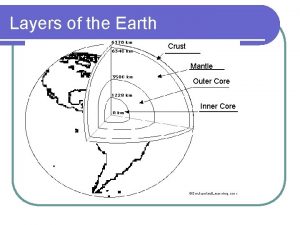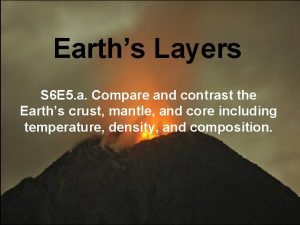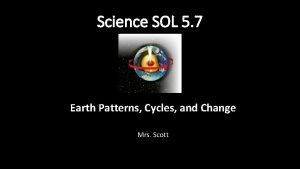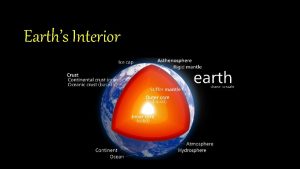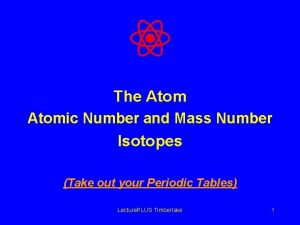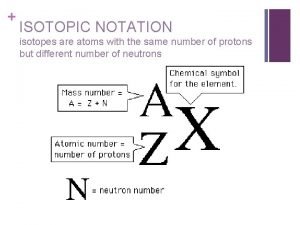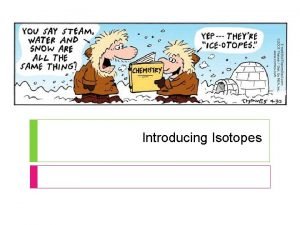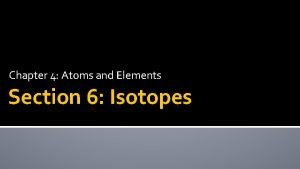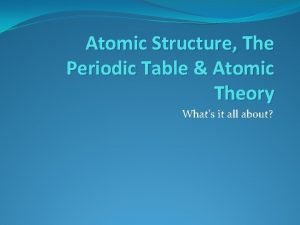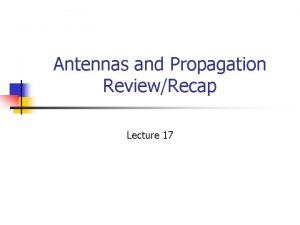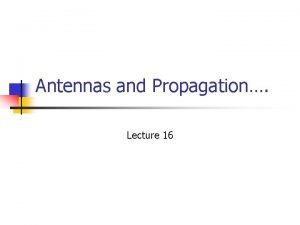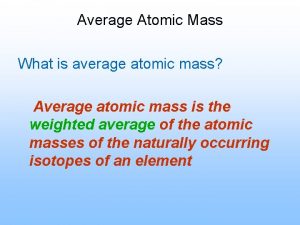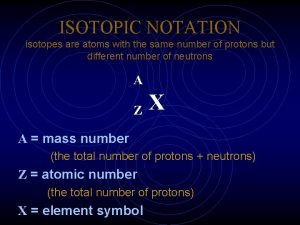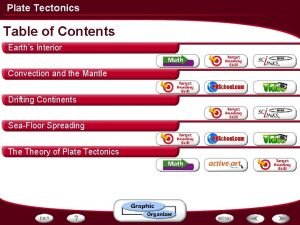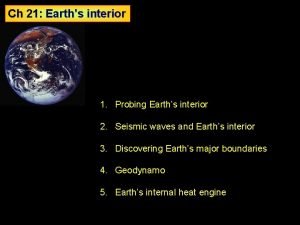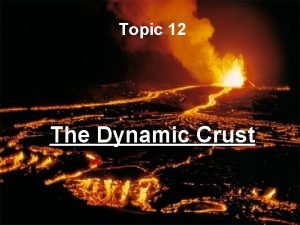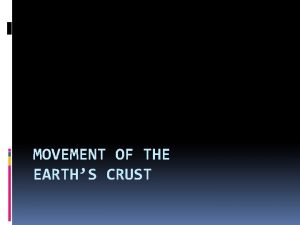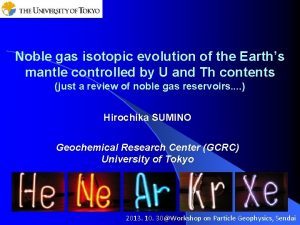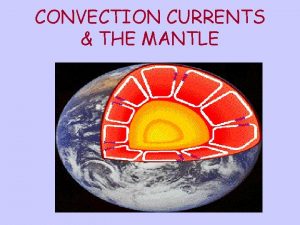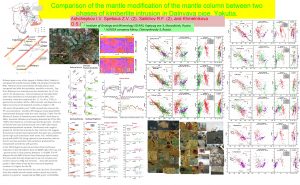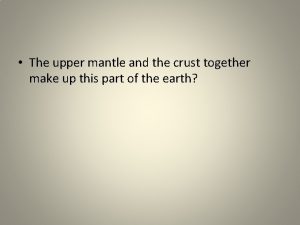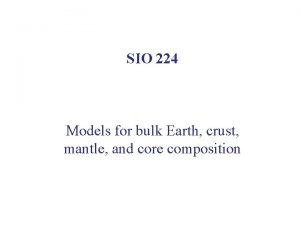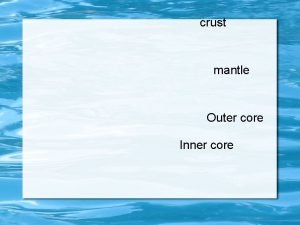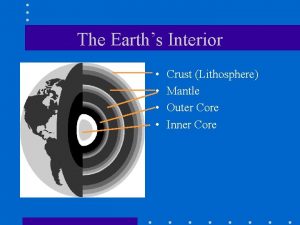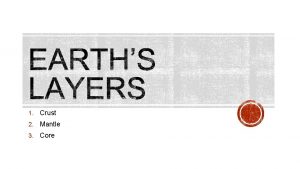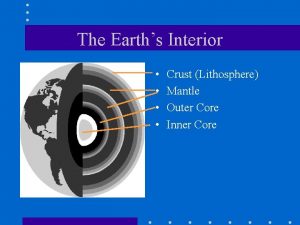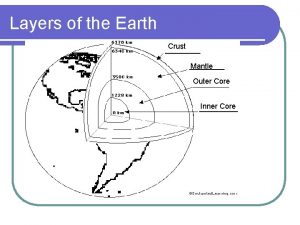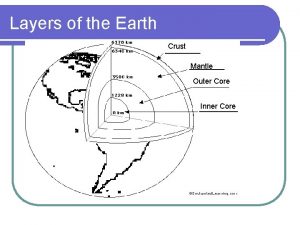Radiogenic isotopic evolution of the mantle and crust





















- Slides: 21

Radiogenic isotopic evolution of the mantle and crust Matt Jackson and Bill Mc. Donot

Sr-Nd isotope plot Hofmann (1997) • Global OIB (ocean island basalts, hotspots) and MORB (midocean ridge basalt) • We will model Sr-Nd isotopic evolution by crust-mantle differentiation.

How to evolve radiogenic isotopic differences? Step #1. Fractionate the radioactive parent (87 Rb) from the radiogenic daughter (87 Sr). Step #2. Wait.

Step 1: How to fractionate parent from daughter? Answer: Melt the mantle and extract the melt.

Batch melting • Cl/Co = (Concentration in liquid)/(Concentration original unmelted solid) • Where F is the amount of melting. – Values range from 0 (no melting) to 1 (100% melting). • Partition coefficient (D): When D < 1, incompatible When D > 1, compatible

CL 1 = C O D (1 - F) + F Batch Melting A plot of CL/CO vs. F for various values of D Batch Melting Rb Sr

Rb-Sr fractionation during mantle melting Rb Sr

Sr ≈ Nd < Sm

Sm-Nd fractionation during mantle melting DSm>DNd


Step #2: Now that we have fractionated parent (Rb) from daughter (Sr), how do we generate isotopic differences? Answer: Wait, and give the 87 Rb time to decay to 87 Sr.

How to evolve radiogenic isotopic differences? 87 Rb 87 Sr (t 1/2=48. 8 billion years) λ=ln(2)/t 1/2 (define decay constant) 87 Sr 87 Rb(eλt-1) = + meas initial Questions: 1. When 87 Rb/86 Sr is high, what happens to 87 Sr/86 Sr over time? 2. When 87 Rb/86 Sr is low, what happens to 87 Sr/86 Sr over time? We measure this Parent-daughter ratio Decay constant ( ) initial y = b + x * m Time in years

y 0. 526 = b + ( x )( m ) t = 1 x 109 yrs 87 Sr/86 Sr 0. 522 Mantle Residue 0. 518 liquid Original source t = 5 x 108 yrs 0. 514 t = 0 yrs 0. 510 0 0. 5 87 Rb/86 Sr 1 1. 5 b = y-intercept = initial 87 Sr/86 Sr ratio m = slope (proportional to age) t = ln(m+1)/λ 2


How to evolve radiogenic isotopic differences? 147 Sm 143 Nd + 4 He (t 1/2=106 billion years) 143 Nd 147 Sm(eλt-1) = + meas initial Questions: 1. When 147 Sm/144 Nd is high, what happens to 143 Nd/144 Nd over time? 2. When 147 Sm/144 Nd is low, what happens to 143 Nd/144 Nd over time? We measure this Parent-daughter ratio Decay constant ( ) initial y = b + x * m Time in years

y = b + ( x )( m ) 0. 526 t = 1 x 109 yrs 143 Nd/144 Nd 0. 522 Original mantle 0. 518 Mantle Residue liquid t = 5 x 108 yrs 0. 514 t = 0 yrs 0. 510 0 0. 5 147 Sm/144 Nd 1 1. 5 2 b = y-intercept = initial 143 Nd/144 Nd ratio m = slope (proportional to age) t = ln(m+1)/λ


Radiogenic isotopes: The role of parentdaughter fractionation AND time

The 87 Sr/86 Sr – 143 Nd/144 Nd mantle array

Sr and Nd isotopic evolution of the crust-mantle Assume an initial uniform silicate Earth underwent melting at some time in the past to form continental crust (melt) and mantle (melting residue): 1. Calculate the present-day Sr and Nd isotopic composition of 1%, 2%, and 5% partial melts and respective melting residues, assuming the bulk partition coefficients given in the spreadsheet. 1. Now assume melting occurred at different times (e. g. , 1 Ga, 2 Ga, 3 Ga, etc). What happens to 143 Nd/144 Nd and 87 Sr/86 Sr in the melt and the residue. 2. Now vary the starting composition of the silicate Earth.

Things to think about • Think about the role of time (bigger spread in Sr and Nd isotopes if fractionated earlier). • Consider the role of melt fraction (F). • What role does variability in the starting composition play? • Can you match the global OIB-MORB array with this simple model?
 The strong lower part of the mantle
The strong lower part of the mantle The core movie trailer
The core movie trailer Crust mantle core diagram
Crust mantle core diagram What are the 3 main layers of the earth? *
What are the 3 main layers of the earth? * 5 physical layers of the earth
5 physical layers of the earth Core mantle crust
Core mantle crust Core crust mantle
Core crust mantle Core mantle crust
Core mantle crust Isotopic notation example
Isotopic notation example Isotopic notation
Isotopic notation Isotope symbol
Isotope symbol What does the number represent in the isotope platinum-194
What does the number represent in the isotope platinum-194 Isotope sumbol
Isotope sumbol 15/999 mass street periodic table, o 8
15/999 mass street periodic table, o 8 Isotopic antenna
Isotopic antenna Antenna gain formula examples
Antenna gain formula examples Atomic mass of boron-10
Atomic mass of boron-10 Isotopes
Isotopes Isotope notation practice
Isotope notation practice Plate tectonics
Plate tectonics The boundary between the mantle and core
The boundary between the mantle and core Earth's dynamic crust and interior topic 12
Earth's dynamic crust and interior topic 12


